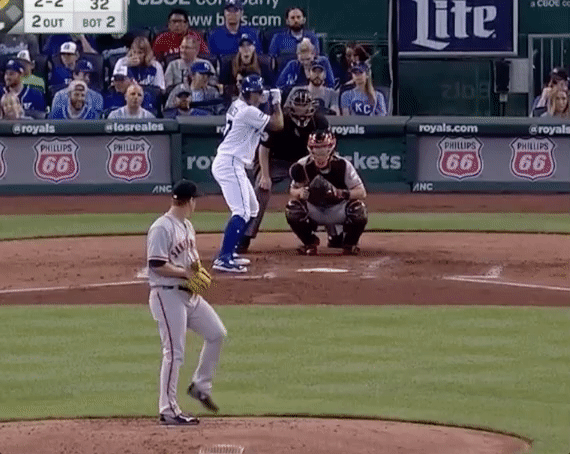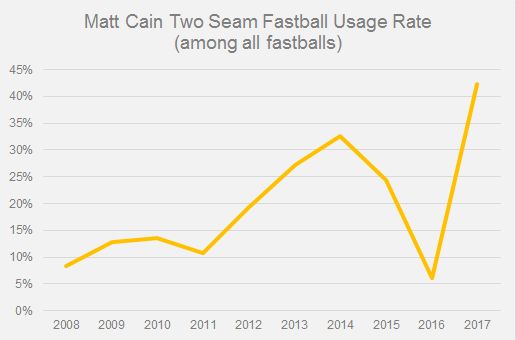Matt Cain, on the back of two consecutive successful starts, has quite a few people asking the annual question of: “Is Matt Cain good again?” This question almost always invariably gets raised every year when Cain, who hasn’t had an average or better season since 2012, manages a solid-to-good start. It’s become a tradition of sorts among the diehard fans waiting for the 2006-2012 version Cain to return.
On the surface of things, Cain’s current 3.31 ERA is a bright spot, but it’s common knowledge that ERA rarely tells the whole story of a pitcher’s success or failure. Cain’s pitching predictors like FIP or xFIP suggest he’s performed more like that of a mid-5.00 ERA pitcher. His strikeout rate as measured by strikeout percentage (16.7 percent) is nearly three points off his career (19.9 percent). His walk rate as measured by walk percentage (11.1 percent) is nearly three points off his career (8.2 percent). He’s given up 15 hits in 16.1 innings pitched and his strand percentage of 90.4 percent is scary as hell.
He’s not striking out hitters like he once did. He’s walking hitters more than ever and he’s been fortunate to leave a lot of runners on base. All of that is bad. Really bad, actually.
So, when people ask the “Is he good?” question I think they know the answer already; he’s not good. It’s probably not going to happen. Baseball players age and decline. It’s a cruel fact of baseball. The projection systems seem to think he’s a half-win pitcher and given his age and recent history, that seems reasonable.
However, that doesn’t mean that Cain’s mini-success to start 2017 isn’t interesting. In fact, I’ve been looking forward to his starts. That’s not something I would have typed last year or the year before. Why do I look forward to Cain’s starts? To the naked eye, it appears that he’s trying to do things differently. And I’ve always found it interesting when major leaguers try to do something different.

Cain is throwing a two seam fastball more this season. That sentence alone might not interest you, but it’s not a pitch, historically, that Cain has relied heavily on.
Here’s the obligatory graph:

I queried the rate of two seam fastballs among all Cain fastballs since 2008. In 2016, Cain threw just 47 pitches that PITCHf/x classified as a two seam fastball; in 2017, he’s already thrown 64 two seam fastballs. The data from 2014-2016 is a little hinky since Cain was largely hurt and didn’t pitch all that much. When healthy, Cain threw the two seam fastball between 10-20 percent of the time.
Cain’s average heater is a career low 89.4 mph in 2017. It would seam that Cain is trying to focus more on movement than the traditional four seam fastball that he broke into the majors with. Years and injuries have seen Cain’s velocity drop from a high of low 90’s in from 2005-2007 to around 90 mph more recently. In that regard, it makes sense: if you are losing velocity on your fastball, might as well try to mix in some movement to compensate.
Our data table of Cain’s two seam usage rates: